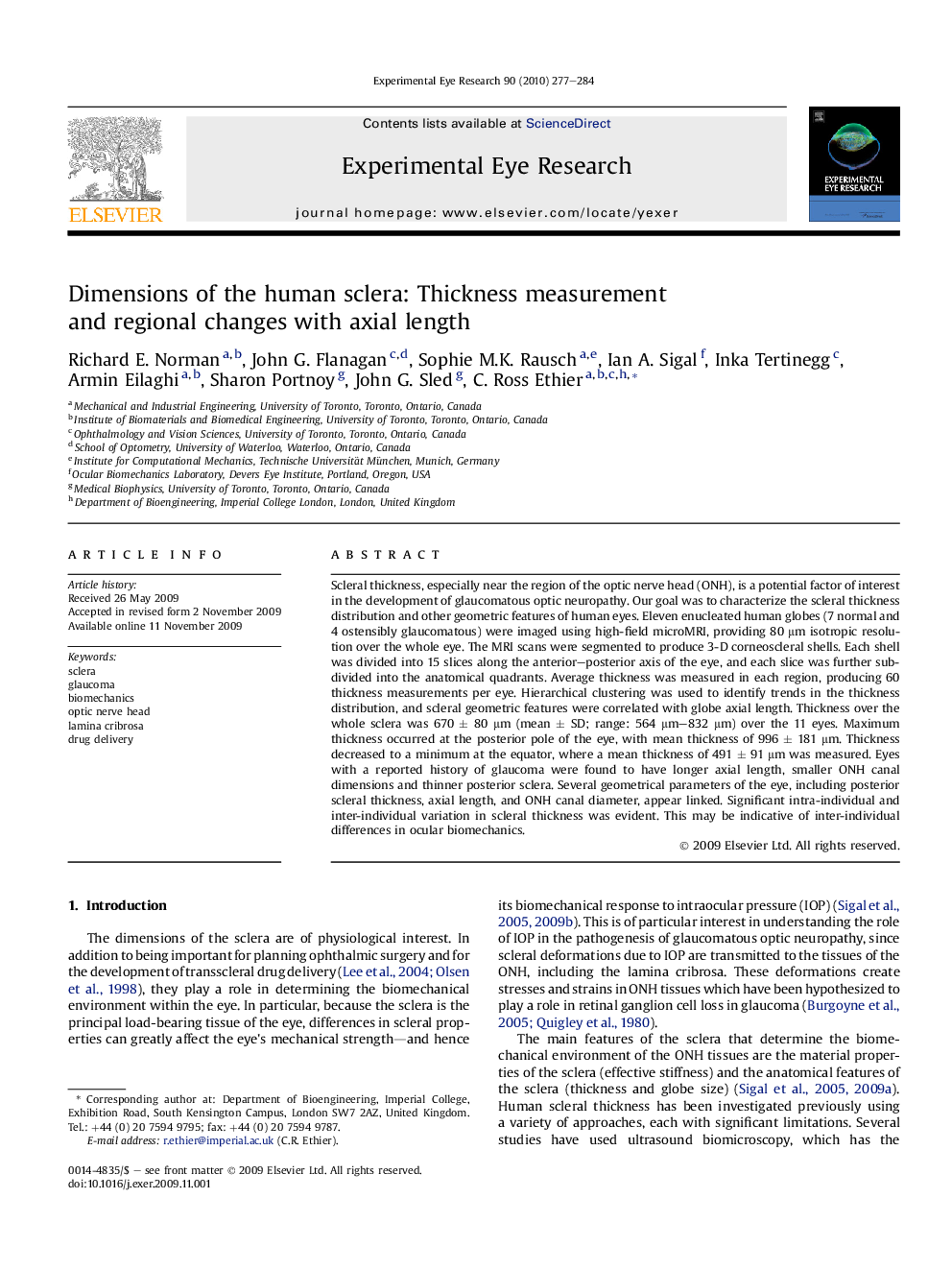| Article ID | Journal | Published Year | Pages | File Type |
|---|---|---|---|---|
| 4012039 | Experimental Eye Research | 2010 | 8 Pages |
Scleral thickness, especially near the region of the optic nerve head (ONH), is a potential factor of interest in the development of glaucomatous optic neuropathy. Our goal was to characterize the scleral thickness distribution and other geometric features of human eyes. Eleven enucleated human globes (7 normal and 4 ostensibly glaucomatous) were imaged using high-field microMRI, providing 80 μm isotropic resolution over the whole eye. The MRI scans were segmented to produce 3-D corneoscleral shells. Each shell was divided into 15 slices along the anterior–posterior axis of the eye, and each slice was further subdivided into the anatomical quadrants. Average thickness was measured in each region, producing 60 thickness measurements per eye. Hierarchical clustering was used to identify trends in the thickness distribution, and scleral geometric features were correlated with globe axial length. Thickness over the whole sclera was 670 ± 80 μm (mean ± SD; range: 564 μm–832 μm) over the 11 eyes. Maximum thickness occurred at the posterior pole of the eye, with mean thickness of 996 ± 181 μm. Thickness decreased to a minimum at the equator, where a mean thickness of 491 ± 91 μm was measured. Eyes with a reported history of glaucoma were found to have longer axial length, smaller ONH canal dimensions and thinner posterior sclera. Several geometrical parameters of the eye, including posterior scleral thickness, axial length, and ONH canal diameter, appear linked. Significant intra-individual and inter-individual variation in scleral thickness was evident. This may be indicative of inter-individual differences in ocular biomechanics.
